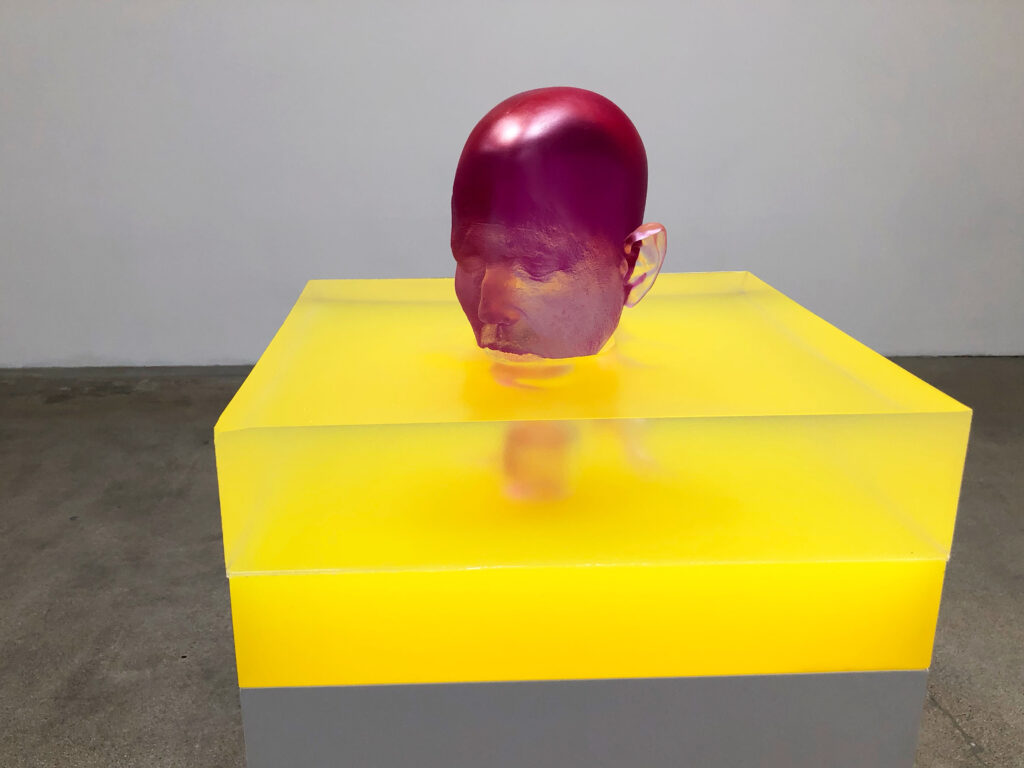
Magenta Swimming in Yellow, 2015-7, by Rona Pondick from her solo exhibition at Zevitas Marcus. The sculpture was created using pigmented resin and acrylic.
From the Zevitas Marcus press release–
In 2013, Pondick began an intensive period of experimentation with materials that were new to her practice: resins and acrylics. Over a period of five years, she developed complex methods of working with these materials and came to understand their sculptural potential. This exhibition is the first time this body of work has been seen on the West Coast.
Since her career began in 1984, Rona’s work has consistently referenced the body, in both a metaphorical and literal sense. Her sculptural practice has been no less defined by her ceaseless exploration of new materials and methods. Stainless-steel was Rona’s primary medium for the better part of a decade beginning in 1998. Her newest works are made from resins, acrylics and modeling compound.While thematically related to Rona’s earlier work, these new sculptures are notable for their extraordinary use of color and the way in which the artist’s hand is ever present, elements which heighten the sense of fragility and humanity that have always been achingly present in her work.
Also worth checking out- this ODDA magazine interview with the Pondrick from this year (2022) and her Instagram.



